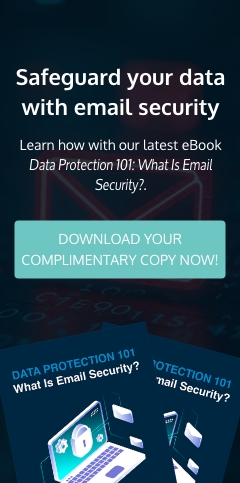It all starts with a simple and seemingly innocuous email sitting in your employees’ inboxes. Almost everybody marks this as spam or deletes the suspicious email but one unwitting employee opens the unsolicited email and clicks on the link. In just a few seconds, this honest mistake has put your organization’s security and future in jeopardy.
This hypothetical situation is known as a phishing scam and they are extremely prevalent in today’s business world. As a social engineering attack, phishing targets people instead of system vulnerabilities. But why do cybercriminals use this method and what are they trying to achieve? We look at how phishing works and what you can do about it.
What is the objective?
A phishing campaign can have numerous objectives, but the common theme here is tricking the user to reveal critical information or authorize access to an organization’s network. A common form of phishing usually involves a malicious link that performs a certain action when clicked.
This action can range from installing malware and/or ransomware to granting a hacker access to the organization’s email account or sensitive security information. The effects of malware can be instant at times and spread quickly across the network, which leads to all kinds of problems from performance issues to software failures.
Ransomware can deploy just as quickly and lock up an entire network within minutes. This leaves the organization with no choice but to employ an expensive security agency to remove the ransomware or pay the ransom to get back to work.
All of these scenarios cause a lot of damage to organizations. A malware-infected IT network greatly affects operations, and undoing the damage could take countless hours of work. Ransomware attacks are always extremely expensive to counter, especially if they are fully in effect. Organizations will lose a lot of customer trust and confidence if word gets out that they are victims of a phishing attack.
How do phishing campaigns work?
The act of phishing is usually in the form of a widespread email campaign with hundreds and thousands of emails sent to prospective targets. These phishing emails are usually done under the pretext of an urgent message from a fake version of a legitimate company. While a large volume of emails are sent out, the hackers responsible for a phishing campaign only expect a handful of people to click on links and download email attachments.
Trying to get access to a company’s network by sending a “change password” email is very common and phishing emails pose as universities, banks, and so on to get the user to follow the link and enter their personal details into the form fields. The emails are created with logos, URLs, and other small details that look very similar to those of real organizations, to trick readers into believing that they are the real thing.
“Spear phishing” is an even more targeted variant of phishing whereby the hacker tries to infiltrate or attack a specific organization. Therefore, they create a more detailed and believable email campaign. In this case, the subject of the email is more personalized to make it even harder to spot the scam.
How do you avoid phishing scams?
Phishing can be extremely effective if it isn’t detected, but there are many ways to counter phishing attempts.
The best way to prevent phishing emails is to have an educated and alert workforce that understands the danger of phishing. Cautiously reading and reporting suspicious emails will nullify even the most sophisticated phishing campaign because employees are trained not to follow instructions in emails.
Additional ways to verify user identity such as multifactor authentication prevent hackers from making progress even if they do somehow manage to steal login credentials. Strong firewall protocols and anti-phishing software can also protect your systems from unauthorized access and malicious hackers.
Do you want to keep your organization safe from phishing attacks? Contact our IT specialists at NetQuest today to learn more about our phishing countermeasures from employee training to robust cybersecurity solutions.


